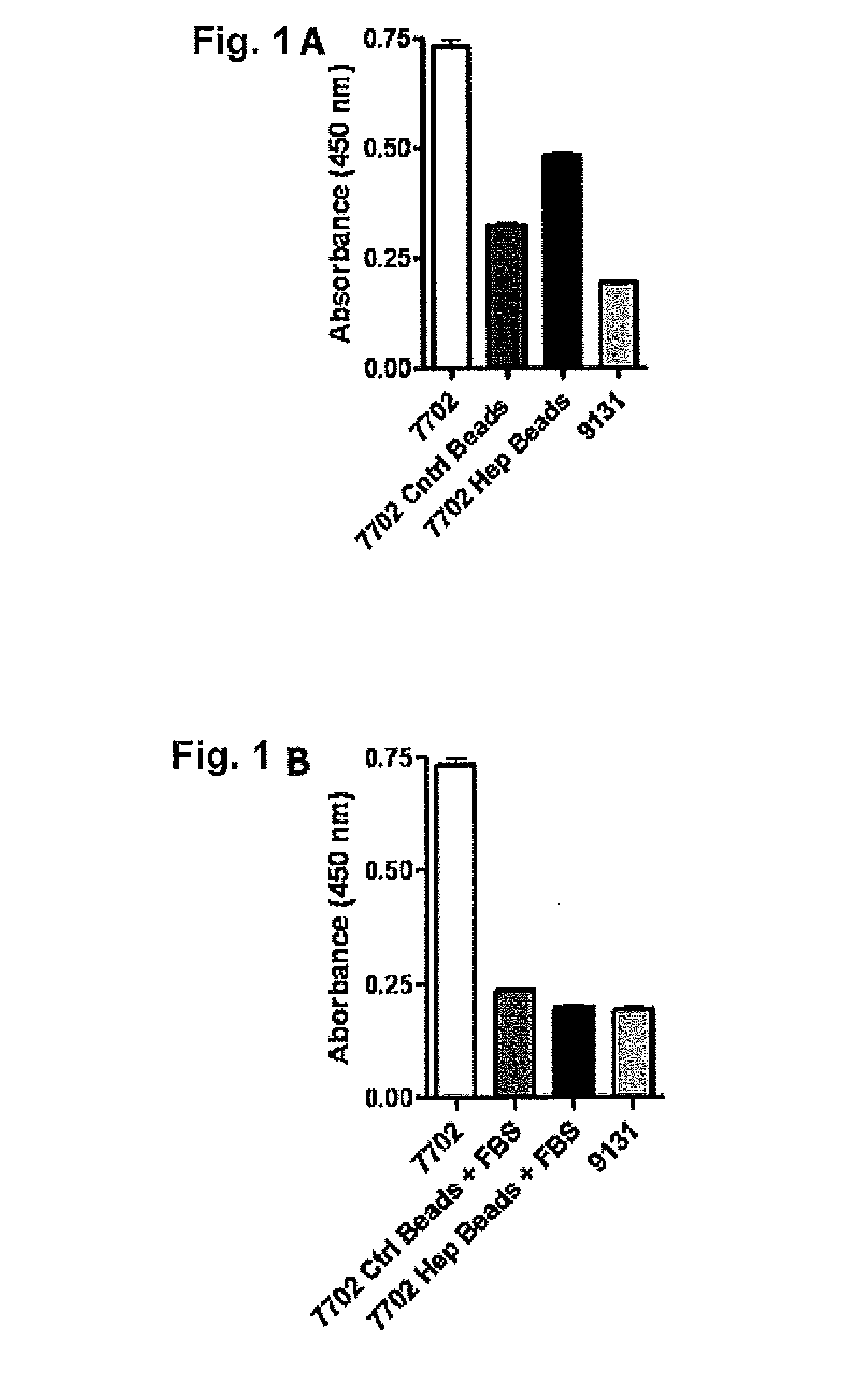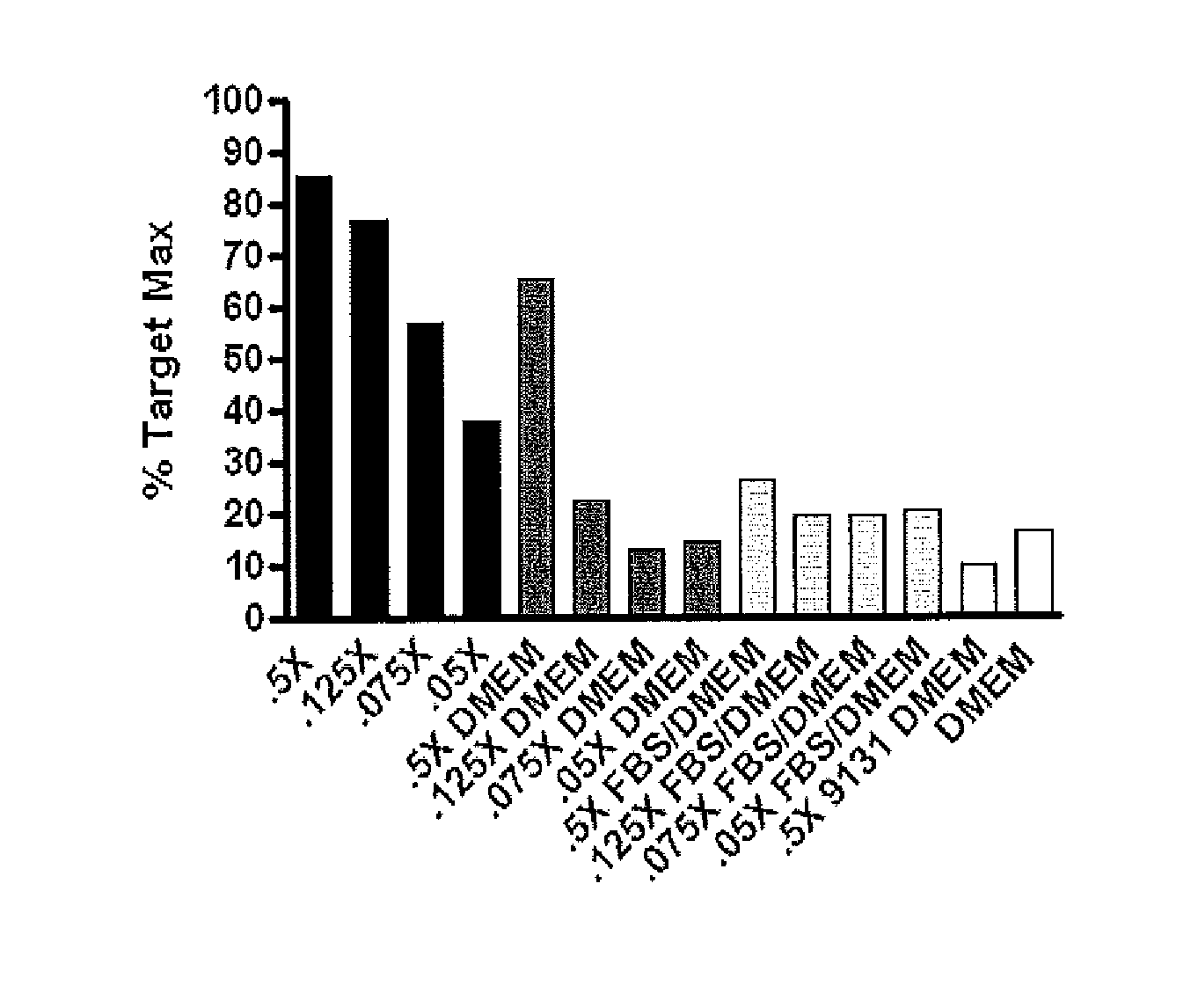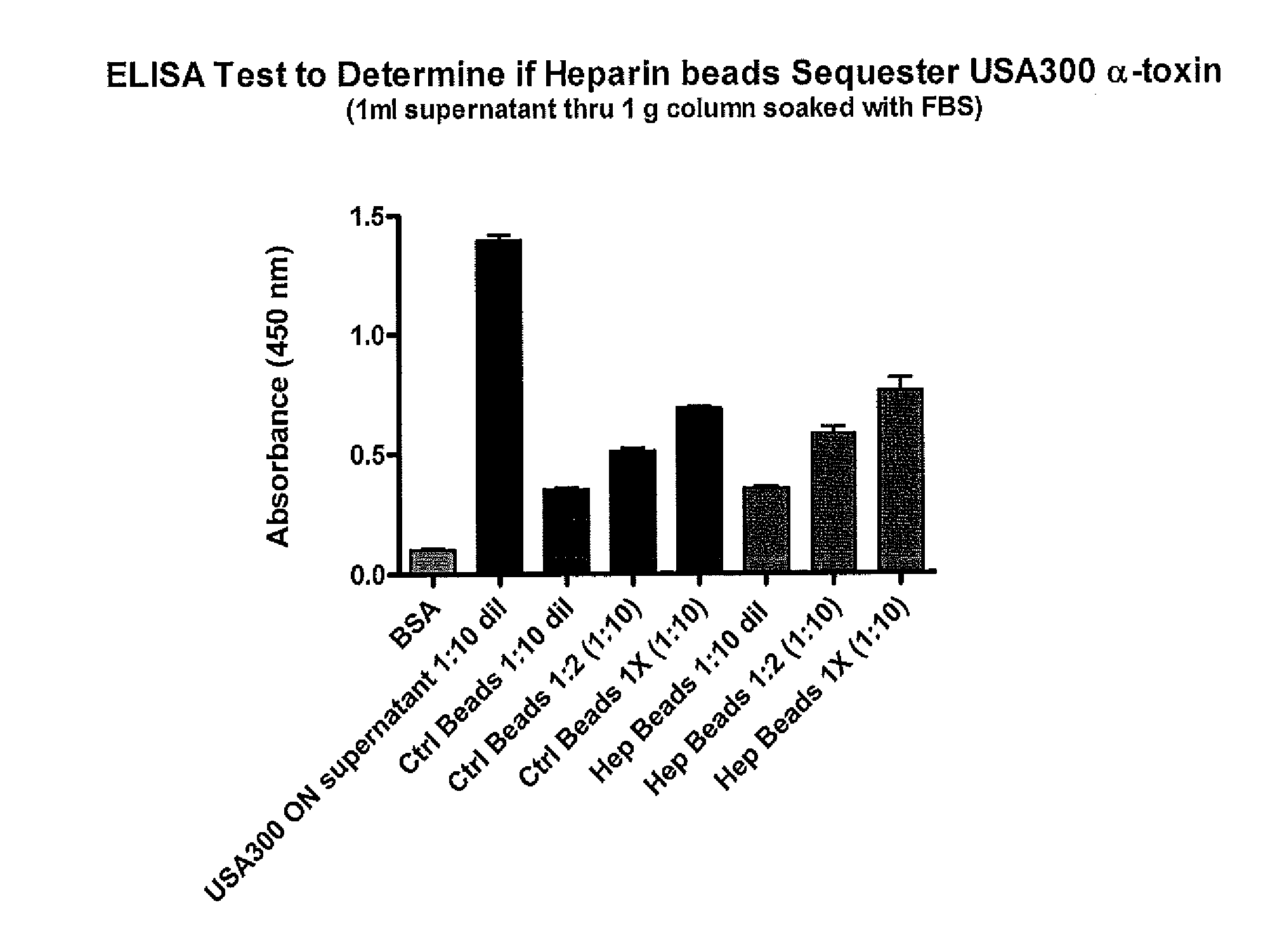Removal of virulence factors through extracorporeal therapy
a technology of virulence factor and extracorporeal therapy, which is applied in the direction of antibacterial agents, extracellular fluid disorders, separation processes, etc., can solve the problems of increased paralysis, limited success, and increased paralysis
- Summary
- Abstract
- Description
- Claims
- Application Information
AI Technical Summary
Problems solved by technology
Method used
Image
Examples
example 1
6.1. Example 1
Preparation of Heparin Column
[0092]Polyethylene (PE) beads, with an average diameter of 0.3 mm (lot no. 180153), are supplied by the Polymer Technology Group (Berkeley, USA) and the columns (Mobicol, 1 mL) are obtained from MoBiTec (Germany). Heparin and polyethyleneimine (PEI) are purchased from Scientific Protein Laboratories (Waunakee, Wis., USA) and BASF (Ludwigshafen, Germany) respectively. All chemicals used are of analytical grade or better.
[0093]Immobilization of heparin onto the beads are performed as described by Larm et al. (Larm O, Larsson R, Olsson P. A new non-thrombogenic surface prepared by selective covalent binding of heparin via a modified reducing terminal residue. Biomater Med Devices Artif Organs 1983; 11: 161-173).
[0094]The polymeric surface is heparinized using the general procedure described below.
[0095]The polymeric surface is etched with a oxidizing agent (potassium permanganate, ammoniumperoxidisulfate) in order to introduce hydrophilic char...
example 2
6.2. Example 2
Removal of Toxins
[0103]Arterial blood is drawn from the hemodialyzers of patients. The blood is collected in EDTA vacuum tubes and immediately 1 mL is applied to the previously prepared columns and passed through using a roller-pump at for example, one of 1, 5 and 10 mL / min. Blood that has passed through the columns is immediately collected at the other end and cold-centrifuged (4500 G). The supernatants are subsequently collected and frozen at −80° C. for later analysis.
[0104]Briefly, passage through the heparinised beads results in a significantly bigger decrease in blood toxins as compared to non-heparinized beads.
example 3
6.3. Example 3
In Vitro Removal of B. anthracis PA
[0105]Bacterial Supernatants: Overnight cultures of B. anthracis 7702 or 9131 were cultured in Luria Broth (LB) at 37° C. while shaking at 250 RPM. 20 mLs of LB with 0.8% sodium bicarbonate (NaHCO3) at pH 8 (pH with 1 M HEPES) was inoculated with 1 mL overnight 7702 culture and grown until late exponential phase (approximately 7 hours) while shaking at 250 RPM at 37° C. Cultures were centrifuged for 5 minutes at 3500 RPM to remove bacterial cells and debris. Supernatants were collected and passed through a 0.2 μm filter and used immediately or stored at −20° C.
[0106]Preparation of Beads: 1 g heparin or control beads were added to syringes with a filter placed in the bottom and on top of the beads. Prior to experiments, beads were prepped by the addition of 2 mLs Tris-buffered Saline (TBS). Where Fetal Bovine Serum (FBS) was used, the beads were prepped by the addition of 2 mLs TBS followed by 2 mLs FBS, which was passaged over the bea...
PUM
| Property | Measurement | Unit |
|---|---|---|
| flow rate | aaaaa | aaaaa |
| diameter | aaaaa | aaaaa |
| diameter | aaaaa | aaaaa |
Abstract
Description
Claims
Application Information
 Login to View More
Login to View More - R&D
- Intellectual Property
- Life Sciences
- Materials
- Tech Scout
- Unparalleled Data Quality
- Higher Quality Content
- 60% Fewer Hallucinations
Browse by: Latest US Patents, China's latest patents, Technical Efficacy Thesaurus, Application Domain, Technology Topic, Popular Technical Reports.
© 2025 PatSnap. All rights reserved.Legal|Privacy policy|Modern Slavery Act Transparency Statement|Sitemap|About US| Contact US: help@patsnap.com



